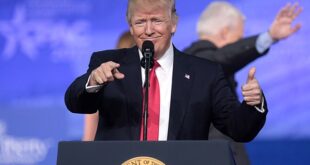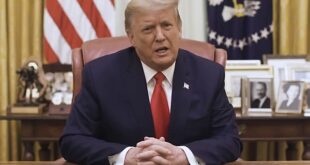The United States federal government is on the brink of a shutdown due to a standoff in Congress over federal spending. A government shutdown occurs when Congress fails to pass funding legislation that is signed into law by the president. While certain essential functions will continue, millions of federal employees, including military personnel, could go without paychecks, and federal agencies will stop non-essential work.
Here’s a breakdown of what a government shutdown means and its potential impacts:
What Is a Government Shutdown?
A government shutdown occurs when Congress fails to pass funding legislation necessary for the federal government to operate. These funding bills, known as appropriations bills, must be signed into law by the President. There are typically 12 different spending bills that fund various government agencies and functions. However, due to political disputes and the complexity of the budget process, Congress often resorts to passing a temporary funding extension called a continuing resolution (CR) to keep the government running temporarily. When no funding legislation or CR is enacted, federal agencies are required to stop all nonessential work, and many federal employees are furloughed without pay for the duration of the shutdown. Essential employees, such as those responsible for public safety (e.g., air traffic controllers and law enforcement officers), continue to work but may not receive their paychecks during the shutdown.
When Would a Shutdown Begin and How Long Could It Last?
The current funding for the federal government expires on October 1st, marking the start of the federal budget year. If Congress cannot agree on a funding plan that the President signs into law before this deadline, a government shutdown would effectively begin at 12:01 a.m. on October 1st. The duration of a shutdown is unpredictable and depends on several factors, including political negotiations. While some shutdowns have been relatively short, lasting only a few days, others have dragged on for weeks or even months. Political factors, the extent of disruptions, and public pressure play significant roles in determining how long a shutdown lasts.
Who Does a Shutdown Affect?
A government shutdown can have a profound impact on various sectors:
- Federal Workers: Millions of federal employees face delayed paychecks during a shutdown. This includes approximately 2 million military personnel and more than 2 million civilian workers across the country. The Department of Defense, Veterans Affairs, and Homeland Security have a substantial portion of federal workers. While essential employees in public safety roles continue to work without pay, many non-essential employees are furloughed. Under a 2019 law, furloughed workers are eligible to receive backpay once the government is funded.
- Government Services: A shutdown can disrupt government services and functions, leading to delays in services like clinical trials, firearm permits, and passport applications. Some federal offices may close or have reduced hours during a shutdown.
- Businesses and Contractors: Entities closely tied to the federal government, such as federal contractors and businesses located near national parks and government facilities, may experience disruptions and financial downturns. The travel sector, including airlines and tourism-related services near national parks, could lose substantial revenue.
- Financial Markets: A government shutdown can rattle financial markets, causing uncertainty among investors. Goldman Sachs estimated that a shutdown could reduce economic growth by 0.2% per week it lasts, but economic growth might rebound after the government reopens.
- Confidence in Government: Government shutdowns can undermine confidence in the government’s ability to fulfill its basic functions and responsibilities. The U.S. Chamber of Commerce warned that a well-functioning economy depends on a functioning government.
What About Court Cases, Congress, and Presidential Pay?
- Congress and the President: Members of Congress and the President continue to work and receive their salaries during a government shutdown. However, non-essential staff members may be furloughed.
- Courts: The Supreme Court, which begins its new term in October, would not be affected by a short-term shutdown because it can draw on a reserve fund generated from court fees. The rest of the federal judiciary would typically operate normally for the first two weeks of October, with decisions on activities made by individual courts across the country. Judges’ salaries are protected by the Constitution, and they continue to receive pay during their tenure.
- Special Counsels: Funding for special counsels appointed by the Attorney General, such as those overseeing cases involving former President Donald Trump and Hunter Biden (son of President Joe Biden), would not be affected by a government shutdown because they are financed through a permanent, indefinite appropriation.
Has This Happened Before?
Government shutdowns have occurred since the 1980s, with varying degrees of impact. Prior to the 1980s, funding lapses did not significantly disrupt government operations. Since 1976, there have been 22 funding gaps, with 10 leading to worker furloughs. However, the most significant and protracted shutdowns have taken place since the presidency of Bill Clinton, particularly during the standoff over budget cuts between then-Speaker Newt Gingrich and the Clinton administration. The longest government shutdown in recent history occurred from December 2018 to January 2019, lasting 35 days but partially affecting the government due to previously passed appropriations bills.
How Can It End?
Ending a government shutdown requires Congress to pass funding legislation, often in the form of a continuing resolution (CR), that the President signs into law. The responsibility for funding the government lies with Congress. If a shutdown persists and causes significant disruptions, public pressure may increase, prompting lawmakers to reach an agreement. However, the duration and resolution of a shutdown are influenced by political negotiations and the willingness of both parties to find a compromise.
The potential impacts of a government shutdown are extensive, affecting federal workers, government services, businesses, financial markets, and public confidence in government operations. The outcome of any shutdown depends on the ability of Congress and the President to reach a funding agreement.
 Poli Alert Political & Civics
Poli Alert Political & Civics



